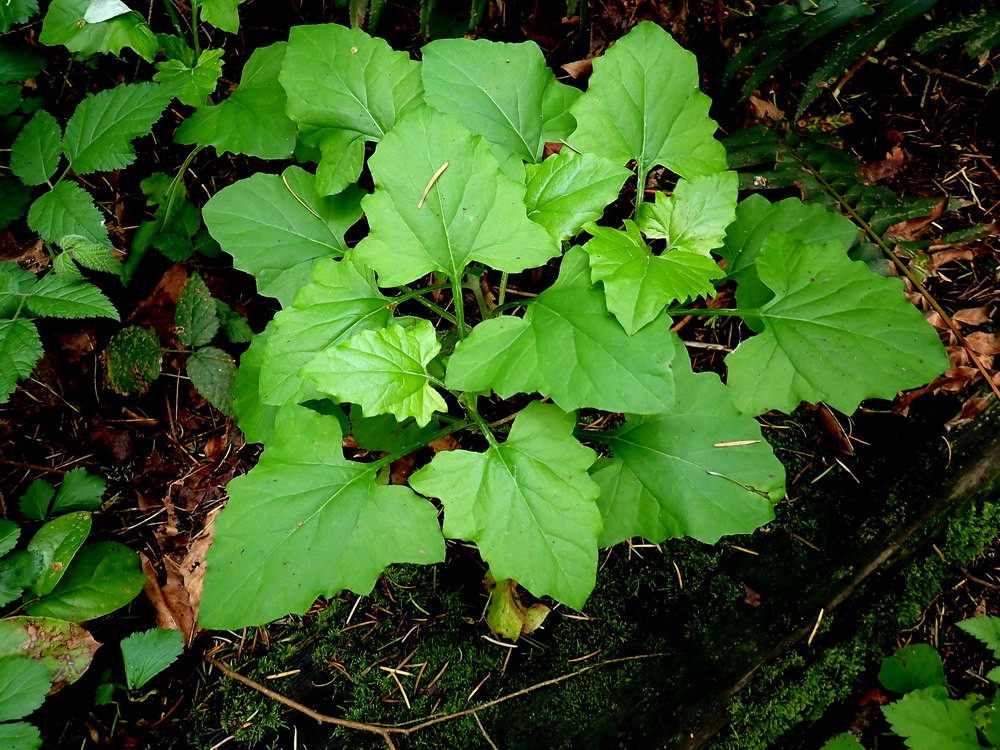It’s best to remove weeds before they flower and seeds develop, but at that stage there are some native plants that can look quite similar.
Don’t Accidentally Pull the Pathfinder
If you’re trying to get a head start on invasive Nipplewort before it flowers, be careful not to accidentally pull native Pathfinder. Telling them apart by the shape of their basal leaves takes practice.


If you’re in doubt, look at the underside of a leaf. If it’s Pathfinder, the underside will be much lighter in color — almost white. The underside of the Nipplewort will be a little lighter in color than the upper side, but not with the stark contrast of the Pathfinder.
The Nipplewort, with its yellow flower, will bloom earlier than the Pathfinder with its non-descript whitish flower, so you can wait if you’re uncertain, but there’s a small window between the time the Nipplewort blooms and begins dispersing seeds.


Keep an Eye Out for Sedges
In general, I try to remove any grasses sprouting in good areas before they go to seed on the assumption that they are most likely non-native and probably invasive. With sedges it’s the opposite. I assume they are native and avoid pulling them until they’ve flowered.


I’ve gradually gotten better at distinguishing grasses from sedges by purposefully not removing plants I think might be sedges, waiting for them to flower, and using iNaturalist or other resources to try to determine the species. If the plants turn out to be grasses, I remove them (except for the native Roemer’s Fescue I’ve been growing from seed).

Herb Robert and Pacific Bleeding Heart


In late May and early June much of the Herb Robert is flowering, and harder to confuse with the Pacific Bleeding Heart which has largely finished flowering. Reach down to the base of the plant with a bare hand and find the “button” where the stems come together. If there’s no button, the plant is Bleeding Heart. Wiggle and pull and dispose of the Herb Robert in the trash or a municipal compost receptacle. If left on the ground or even on top of a compost pile, seeds can continue to develop and ripen, and remain viable for years.
